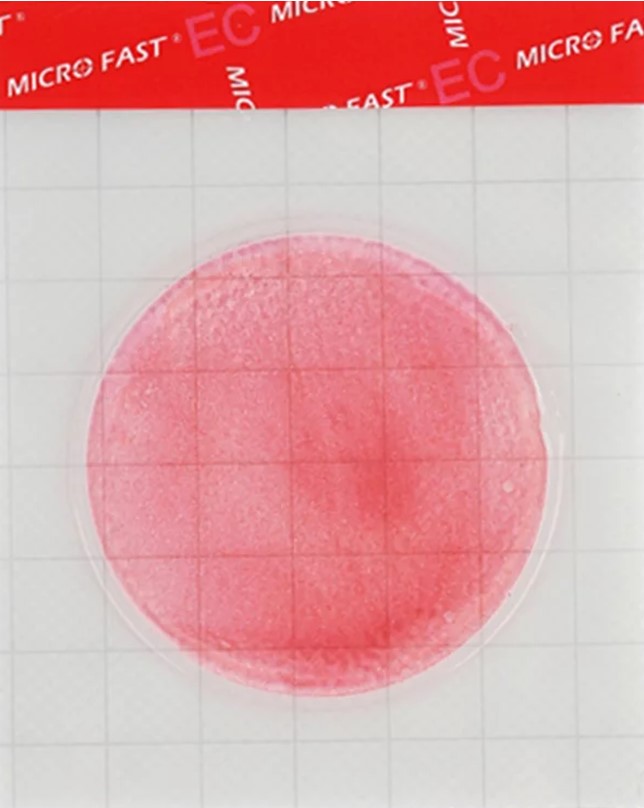"Kebabs" warmed up prices for pork
The Ministry of Agriculture reported a rise in the price of pork by 2.1% over the past week. Experts explain this by seasonal demand, but not everything is so simple.
According to the Ministry of Agriculture of the Russian Federation, the weighted average price for pigs (in live weight) was (without VAT) on August 18, 118.84 thousand rubles per ton. This is 2.1% more than a week earlier. At the same time, prices for pork half carcasses increased by 1.4%, to 179.40 thousand rubles. The calculations were made by the departmental system for monitoring and forecasting food security.
The ministry said in a statement that in general, agricultural organizations produced 2,387.5 thousand tons of pigs in January-June 2021 (+2.0% compared to the same period in 2020). All calculations are based on Rosstat data. According to the agency, in January-July, the production of livestock and poultry (in live weight) amounted to 6,934.0 thousand tons, remaining at the level of the same period in 2020. The volume of industrial MEAT production in January-June of the year amounted to 1,479.0 thousand tons (0.7% more than the same period in 2020),
Market participants note that a significant increase in pork prices was noted a week ago - prices for half carcasses reached 200 thousand rubles per ton, for "live" - up to 140 thousand rubles. Such data was announced to Interfax by the DIRECTOR General of the Institute for Agricultural Market Studies (IKAR) Dmitry Rylko. He explains such a significant increase in prices with high demand.
“Summer is traditionally a “barbecue” period, the demand for meat is high. A certain role is also played by the fact that there are still restrictions on foreign holidays, people stay in the country, which increases consumption,” Rylko said.
Prices will rise. The buyer will pay
According to Rosstat, the growth in food prices in the Russian Federation in 2020 amounted to 7.9%, recalls Valery Korneichuk, a lecturer in the Department of Financial Disciplines at the Higher School of Financial Management. Now, due to rising food prices on the world market and the weakening of the ruble in 2020, imported ingredients used in the dairy industry and animal husbandry have risen in price and have an impact on the cost of production. Imported veterinary drugs, protein-vitamin mixtures used in animal feeding have risen in price in animal husbandry.
The costs of wages for agricultural workers are also rising, the expert continues. Given the decline in the flow of attracted seasonal migrant workers, this factor is of particular importance. In addition, there is an increase in costs along the entire supply chain - from the manufacturer to retail chains - caused by the increase in the cost of gasoline and fuels and lubricants.
All this is ultimately reflected in the cost of dairy and meat food products. But if MILK is a socially important product, and producers cannot always translate the cost into the final price of goods on the shelf, then the picture is different with meat, Korneichuk explains. The cost of production is growing - the price on the counter for the average buyer is also growing.
On the eve of the elections to the State Duma, the government is preparing a number of new initiatives to reduce food inflation, the expert says. According to him, the Federal Antimonopoly Service is developing a bill that expands the practice of state regulation of food prices and involves directive limitation of the "margin" when selling food to the population.
However, in addition to problems in the food sector, there are also successes, Korneichuk admits. Against the backdrop of the completion of the harvest campaign in RUSSIA, there has been a reduction in the cost of the “borscht set”. However, it is seasonal in nature, since it is not able to significantly reduce the ever-growing costs of agricultural complexes for raw materials, transport, logistics, fertilizers, packaging and labor. In the long term, the Russians are waiting for food prices to rise, the expert is sure, and this will still have to come to terms.
Do you need products? Card products
Before us, alas, is the same story, taking only short temporary respite, says Petr Pushkarev, chief analyst at TeleTrade. Today, the increase in costs has affected pork, and tomorrow it will affect, say, poultry meat or some other type of product. Another manifestation of a scheme where one pulls the other along the chain: more expensive feed or gasoline, taxes not forgiven by the state, old loans not written off on time after the peak of the pandemic from farms - all this entails an increase in costs of producers who are already completely crushed by this load . And for those there is nothing left but to transfer their increased costs to wholesalers, to those - to retail, which, naturally, is forced to shift the burden onto ordinary buyers.
To save money, many people reduced their consumption of beef in the first half of the year, switching to cheaper pork, the analyst notes. The sellers took advantage of the increased demand, and gradually the entire chain raised prices higher, because pork producers sometimes need to, say, buy the same increased prices for grain and mixed feed, repair equipment, have to pay more energy tariffs and, finally, consume other products. After all, in addition to economic needs, they also have other human needs that contribute to the general level of inflation, which is already high in almost all commodity groups.
Regulation of retail prices will not improve the situation, Pushkarev is sure. If you introduce a hard price ceiling, then industry revenue will fall below the minimum profitability. If such a situation lasts for at least three or four months, the producers will begin to hold back shipments, unwittingly provoking a shortage, going to tricks with the release of “higher grade” meat for sale or canning more. And in the long term, it can turn out even worse: producers will simply reduce next year investments in industries that are limited in terms of price growth (in this case, pig farming) so as not to produce losses.
Prices may stop by autumn or winter, if producers are well persuaded, Pushkarev believes. But even then, the cost of products will still make a breakthrough - it will just happen later. The way out is to flood the entire agricultural sector more or less evenly with government subsidies. This is necessary in order to reset the existing “initial conditions” with the exorbitant debt burden that continues to accumulate, plus compensate entrepreneurs for part of the current and ever-increasing everyday expenses. All over Europe, for example, both large farms and farmers are supported with subsidies at an extremely low preferential percentage, because otherwise prices for ordinary consumers simply cannot be contained.
In fairness, it must be said that in Russia government subsidies at a preferential percentage (about half the key rate) are being launched more and more actively since spring. However, it is obvious, the expert says, that their scale is insufficient. Our farmers and food processors need much more substantial amounts of such subsidies - including partial and non-refundable assistance - to eliminate blockages and create incentive mechanisms for more highly profitable production.
This meets the needs of both retail chains and, most importantly, citizens, Pushkarev is sure. However, you cannot distribute subsidies to everyone around, and you cannot keep all the prices for each name and brand, for the entire set of products needed by children and adults. Yes, and you can’t determine from above what should be the price of a popular brand with a specific name and in a specific package, when most food products have a complex composition, additives, and often also an eco-category and something else.
Therefore, the expert concludes, there is no clear alternative to providing support to low-income families, except for a targeted, extensive and flexible system of food certificates or cards. You can call them whatever you like, but they must be flexible regarding the per capita income of the family, be subsidized on a monthly basis and issued by the state, and people will decide for themselves which products they need more.
Read together with it:
- The IEA sees a risk of a decline in oil production in Russia due to sanctions.The IEA sees a risk of reduced oil production in RUSSIA due to US sanctions , but maintains its production forecast. According to the IEA, Russian oil exports will remain unchanged.There is a "significant downside risk" to Russia's oil production forecast due to US sanctions, the International Energy Agency (IEA) said in a report.BLOOMBERG . The agency's experts believe that the latest US sanction...
- UniCredit заявил о галактических усилиях из-за санкций против РоссииUniCredit старается не нарушить «более 15 тыс. санкций», а также не «совершать ошибки», которые позволят изъять его активы в России, заявил гендиректор. После начала военной операции банк начал рассматривать возможность ухода Итальянский банк UniCredit прилагает «галактические усилия», пытаясь соблюсти международные санкции в отношении своего российского подразделения. Об этом заявил генеральный д...
- "Коллективы АПК способны решать любые задачи даже в непростых условиях". Назаров о заслугах сельхозпроизводителейЮрий Назаров 13 ноября, Минск. Обеспечение продовольственной безопасности страны - большое достижение трудовых коллективов аграриев, отметил управляющий делами Президента Республики Беларусь Юрий Назаров на торжественной церемонии награждения государственными и иными наградами работников АПК Управления делами Президента Республики Беларусь, передает корреспондент БЕЛТА. Торжественная церемония наг...
- He crawled to the icon with prayer. The true story of a man who overcame drug addiction.Alexander Ovchinnikov. Topic News. Our project's hero was a drug addict for many years. The thought that this was a dead end never left him, but his addiction proved stronger. One day, when he could no longer walk, he crawled to an icon in prayer. This became his first step toward a new life. Today, he heads a charity center that helps those who have given up hope and are unable to quit ALCOHOL an...
- Министр сельского хозяйства предлагает долгосрочные контракты для стабилизации цен на продуктыЛут подчеркнула, что за последние десять лет рост цен на основные продукты в России не превысил общий уровень инфляции, а в некоторых категориях даже отстает от нее. Тем не менее, наблюдается устойчивый рост себестоимости продукции из-за увеличения цен на технику, энергоресурсы и логистику. Для контроля ценовой ситуации министерство сотрудничает с депутатами и рядом других ведомств. Также она упом...




























































